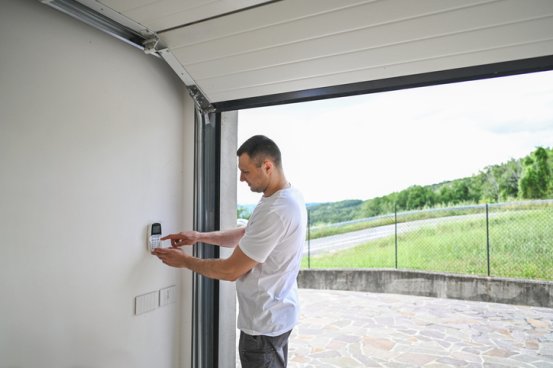

Replacing your garage door is more than a simple home upgrade—it can significantly improve both curb appeal and energy efficiency. A new garage door not only enhances the look of your property but can also increase its resale value. This guide explores when replacement is necessary, the different materials available, the costs involved, the installation process, maintenance practices, and tips on selecting the right installer. By understanding these elements, homeowners can make smart decisions and maximize the return on their investment.
Replacing your garage door is more than a simple home upgrade—it can significantly improve both curb appeal and energy efficiency. A new garage door not only enhances the look of your property but can also increase its resale value. This guide explores when replacement is necessary, the different materials available, the costs involved, the installation process, maintenance practices, and tips on selecting the right installer. By understanding these elements, homeowners can make smart decisions and maximize the return on their investment.

One common question for homeowners is knowing the right time to replace a garage door. Clear warning signs include frequent malfunctions, visible damage, and overall age. If your door has been in service for over 15 years and requires regular repairs, replacement is often the better choice. Issues like broken springs, warped tracks, or gaps letting in pests and drafts are also indicators.
Curb appeal is another important factor. A new, modern garage door can greatly improve the exterior look of your home. For those considering selling, an updated garage door may help attract buyers and raise property value. Rising utility bills can also point to poor insulation, and installing a new, energy-efficient door may cut costs while improving comfort.
Garage doors come in several materials, each offering specific benefits. Wood remains a timeless option, admired for its natural beauty and flexibility in finishes, though it does require consistent upkeep to prevent damage. Fiberglass offers the look of wood without intensive maintenance and is lightweight, rust-resistant, and durable.
Steel doors are another strong option, valued for their toughness and available with insulation to improve efficiency. Vinyl is also a long-lasting material, resistant to dents and rust while requiring less maintenance than traditional wood or steel. Choosing the right material should be based on budget, climate conditions, and design preference.
The price of replacing a garage door varies depending on material, design, and installation requirements. Generally, homeowners spend between $700 and $2,500, covering both the door itself and professional installation. Standard models are on the lower end of the range, while premium designs and customized features cost more.
Extra expenses may arise if other parts, like springs or tracks, need repair or replacement. Smart upgrades, such as advanced automatic openers with smartphone connectivity, can also increase costs. To get the best value, it’s wise to request quotes from multiple service providers before making a decision.
Installing a garage door typically takes less than a day if the site is prepared in advance. The process starts with removing the old door and inspecting the frame for structural issues. Any damage must be addressed before proceeding.
Next, the new panels are fitted one by one, beginning with the bottom section. Proper alignment is essential to avoid future issues. Hardware, springs, and the opener system are then installed and tested. Because precise installation impacts both safety and longevity, hiring a qualified professional is often recommended.
Keeping your garage door in good condition requires consistent maintenance. Regular inspections are important to spot problems early, such as frayed cables, rust, or unusual gaps. Washing the door with mild soap helps prevent damage caused by dirt buildup.
Lubrication is another key step—springs, rollers, and hinges should be greased to maintain smooth, quiet operation. Testing the door’s balance every few months ensures it runs efficiently without unnecessary strain on parts. By following these simple practices, homeowners can extend the door’s life and avoid costly repairs.
Garage door replacement can feel overwhelming, but knowing when to replace, which materials to consider, expected costs, installation steps, and maintenance practices makes the process much easier. Beyond functionality, a new door adds style, improves efficiency, and can raise property value, especially before selling a home. With the right planning and professional guidance, investing in a quality garage door replacement delivers long-lasting benefits in both safety and appearance.